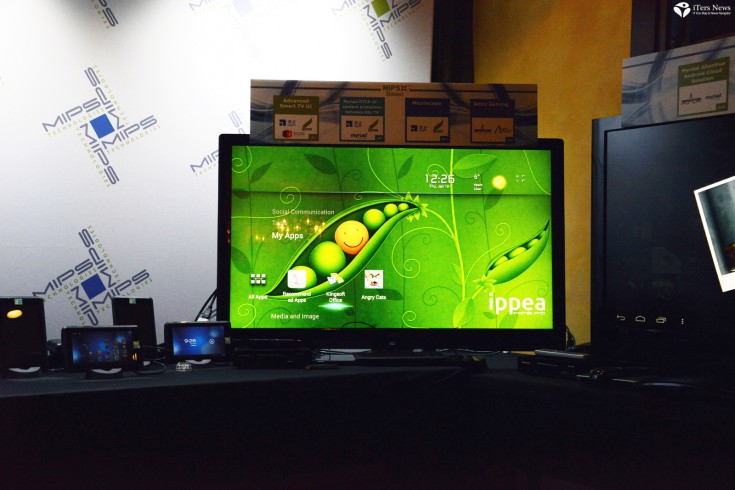(iTers News) -MIPS Technologies is back in the competition. The processor core IP provider is now working together with an array of fabless chip makers and software companies to recreate a MIPS core ecosystem around Android OS – a move to drive up its diversification into Android-based smart phone and tablet PC markets.
At International CES 2013 that ran from Jan 8 to 12, MIPS and its Android ecosystem partners have showcased a line of tablet PC reference designs that run on MIPS processor core.
For example, Ingenic Semiconductor, a Chinese fabless chipmaker, has demonstrated 7-inch and 10.1-inch tablet PCs that are powered its JZ4780 CPU processor. The CPU, or applications processor is based on MIPS’s 1.3Ghz dual-core CPU.
“What MIPS brings in comparison to other competition is a combination of power and performance, and even costs. For example, given performance level, we can provide solutions that have lower power and lower costs. Given the size, we can provide solutions that have a lower power and more performance,” said Scott Johnson, technical marketing manager with MIPS Technologies.
“For example, we have a tablet that is based on Ingenic Semiconductor’s JZ4780. This is a dual-core product that runs at a 1.3GHz using about 140 milliwatt power, very low power. Tablets like this, which is based on MIPS technology, can run and watch movies for eight to ten hours depending on what you are doing in terms of (screen) brightness. This is a very significant advantage in the mobile space in terms of power, ” added he.
The reference designs from Ingenic Semiconductor run on Android OS.
As a growing number of TVs and STBs are now increasingly incorporating Android OS, MIPS is beefing up its Android ecosystem in its stronghold set-top-box, or STB and TV areas.
MIPS has helped its ecosystem partner Ippea Inc. of the U.S. to build a tiny Android-based PC dongle, for example. Called as iPPea TV, the PC dongle system is as small as a USB drive, but has a full Android PC functionality. Once plugged into a TV, the Android dongle recreates a simple one-way dumb TV box into a real interactive smart TV, allowing users to access to the Internet to download video programs from YouTube or other VOD service sites.
The list of partners goes on...
“You can see a HDMI input right here. It (Ippea) gets power from a television, and you will have a full Android set-top-box that runs on any television, which has a HDMI input. Everything is self-contained into Ippea itself, ” said Scott Johnson.
The dongle box even incorporates DTCP-IP protection software stack from Myriad Group AG which enable users to move around contents between devices in a very protective manner. But also, the dongle box incorporates a set of UI, or user interface software stack that allows users to access TV contents by just simply using a TV remote.
Myriad Group AG is one of its software ecosystem partner that also supplies a software stack called AlienVue. Running on Android and Linux OS, the AlienVue can be topped on any television system, which has existing television and protection stacks, without any twist, to give them an access to a full-range of Android applications.
Its list of Android ecosystem partners doesn’t stop there. MIPS is working with fabless chip Sigma Designs and Broadcom to help them to build a number of STB reference designs around MIPS cores.
For example, Innopia Technologies Inc., a Korean STB maker, for example, has built a STB called “KoreaView ‘ around Sigma’s MIPS-based CPU and Android Ice Cream Sandwich OS, while the Korean STB maker has built another cable STB around Broadcom’s CPU, which has MIPS core at its heart.
Stronghold in STB and TV markets
Broadcom also has built a reference design for video media server that comes complete with ist MIPS-based CPU, Android OS and a software stack from iWedia. The software stack from iWedia is a sort of UI stack that provides Android-like applications running on a TV and STB.

PlayStation Nasne is a sort of converter interface box that that convert PlayStation, or PS3 game console into a PVR or personal video recorder.
Working together with PS3, it can connect with live TV systems and record live broadcasts or store them in the HDD of PS3. And, the built-in MIPS core-based ViXs chip takes up the broadcasting contents and transcode them in real-time into another devices like tablet, enabling users to watch and play back them on tablets.
Photo & Videos by JH Bae

